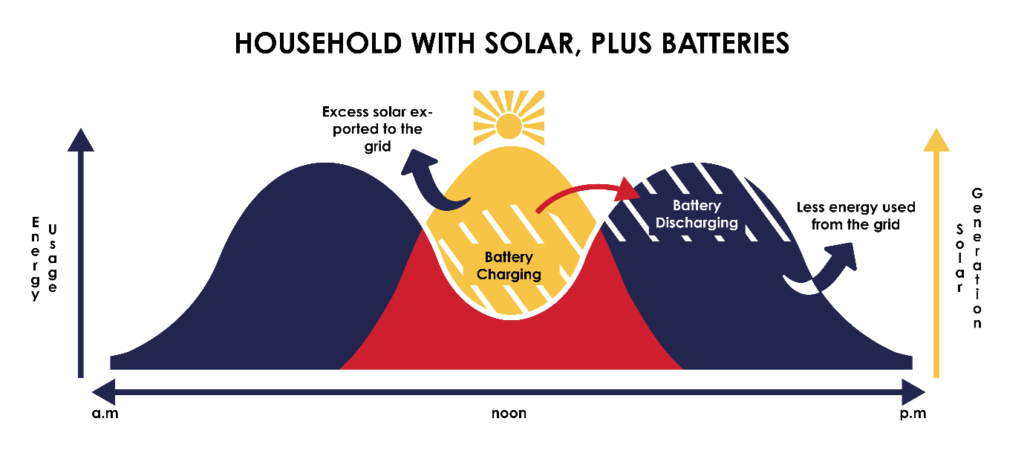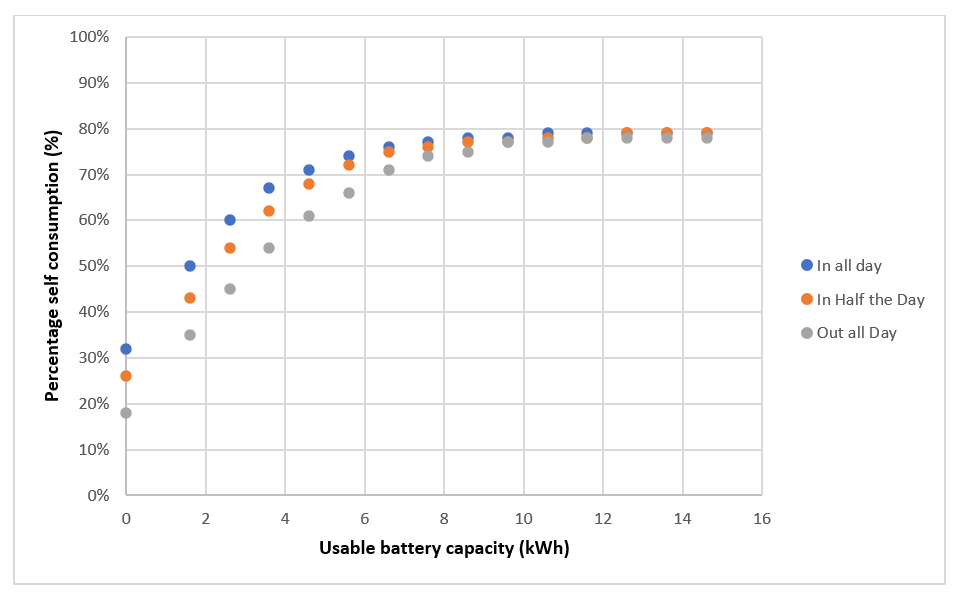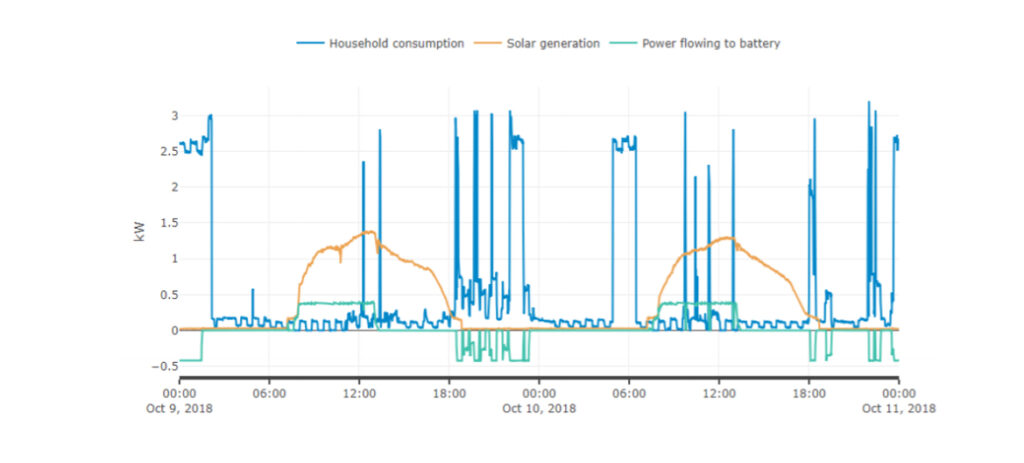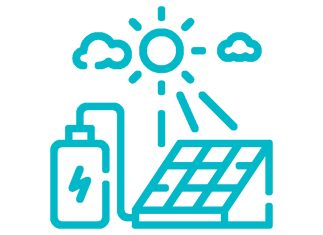Solar PV and batteries
Solar PV systems on homes allow residents to use the electricity generated for free. Maximum electricity generation from a solar PV system is in the middle of the day. However, greatest electricity consumption by households tends to be in the morning and early evening. Household electricity consumption is lower in the middle of the day, particularly for families who are out all day. This means that much of the electricity generated by the solar panels is exported to the electricity grid.
Batteries can be used to store some of the electricity which would otherwise be exported to the grid for use later in the evening when demand is higher and solar generation low.

Battery storage can significantly increase the self-consumption of solar PV by households. The graph below shows an estimate of the solar self-consumption for a household with annual electricity consumption in the range 3,000 to 3,499 kWh and annual solar PV generation between 2,700 and 2,999 kWh. Adding a battery can increase the self-consumption from around 20 to 30% to over 70% with a 6kWh battery.

Battery capacity and output
Batteries come in different capacities and outputs. Early models like the Maslow and PowerFlow Sundial batteries had a total storage capacity of 2 kWh or 2 units of electricity. More recent batteries can store more electricity. This includes the Tesla Powerwall 2 which has a usable capacity of 13.5 kWh.
The other important characteristic is the battery output. Early models could only supply up to 500W of electricity. This could provide a baseload of power to the home while the battery still had charge. When higher power appliances like cookers were used, the battery could only supply part of the power, with the rest coming from the electricity grid.
More modern batteries may supply 1,000W or more of electricity to the home. Some may be able to provide 3,600W or even more if the grid connection allows. Such batteries can power most or all the power consumed by appliances while the battery still has charge. In this case only electric showers or multiple appliances could not be fully powered.
Domestic battery storage is a relatively new technology which is rapidly evolving. Prices are falling and this may mean they will be more frequently installed with solar PV systems in future.
Internet and monitoring
A battery system like solar PV will operate with little or no required action from the household. Domestic battery systems need to be connected to the internet at all times. This is to ensure they receive software updates and assists the manufacturer to keep them operating correctly. As a result, please do not turn your WIFI router off at night or when you go away. If you switch broadband provider, ensure any cable from the battery is plugged into the new WIFI router.
The battery system may provide a monitoring system through a phone app or website. This can help you see the amount of solar generation in relation to your household electricity consumption. You can also see when your battery is no longer charged. If you notice that the battery system is no longer working correctly, if you are in social housing, please contact your landlord, otherwise it would be best to contact your installer.

Advice tips for battery storage
- Find out the capacity of your battery and its power output. This will help you understand the savings it can provide.
- Use any monitoring available to understand when free electricity is available from the solar PV or battery system.
- Use high power appliances one at a time. This should allow more of the power to be provided by the solar PV or battery system.
- Do not turn off your WIFI router. Make sure your battery is plugged into the router and maintains an internet connection.
Download advice guide
 Domestic Battery Storage Advice Guide
Domestic Battery Storage Advice Guide

